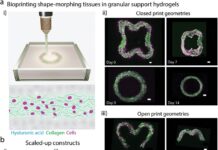Brachytherapy, also known as internal radiation therapy, uses sealed radiation sources placed next to or inside the target area to destroy cancer cells. In comparison to typical radiation treatments that are administered externally, it enables a larger dosage of radiation to be delivered locally. This may be more successful in eliminating the cancer cells while causing less harm to the surrounding healthy tissue.
To get a better understanding of this therapy, The Indian Practitioner had an email interaction with Dr. Harjot Kaur Bajwa, Consultant Radiation Oncologist & Brachytherapy, AROI ABS Fellow (UCSF, USA) American Oncology Institute, Hyderabad, whose observations are reproduced here.
The Indian Practitioner (TIP): What is brachytherapy?
Dr. Harjot Kaur Bajwa (Dr.HB): Brachytherapy is an internal radiation modality that destroys cancer cells and shrinkstumors. The radiation often comes from a radioactive source that is placed inside the body or near the tumor in the form of seeds, ribbons, or wires.
TIP: What are the types of brachytherapy?
Dr. HB: Based on the technique, it is classified as:
Intracavitary brachytherapy involves placing a radioactive source inside the body cavities like cervix, rectum & vagina Interstitial brachytherapy involves implanting a radioactive source directly inside the tumor Intraluminal brachytherapy involves placing a radioactive source inside tubular organs like the esophagus
Based on the radioactive source properties, it is classified as:
High-dose rate (HDR): HDR implants release high doses of radiation for 10 to 20 minutes. This is the most common form of brachytherapy delivered across all sites
Low-dose rate (LDR): LDR implants release low doses of radiation continuously for one to seven days
Permanent: Permanent radioactive implants release radiation continually, and the level of radioactivity quickly decreases over time until they become inactive
TIP: How is brachytherapy different from other forms of radiation?
Dr. HB: Brachytherapy is the most conformal form of radiation among all radiation types. The properties of a brachytherapy source allow the delivery of very high radiation doses to the tumor and very minimal doses to the surrounding normal tissue. Achieving a dose of 200-300 % in the center of the target and a sharp dose fall-off beyond the periphery of the tumor is not achievable by any other radiation modality except brachytherapy
TIP: What are the common cancers that can be treated with brachytherapy?
Dr. HB: Any site in the body that is accessible for brachytherapy source placement can be treated by brachytherapy. Brachytherapy plays a significant role in the treatment of gynecological cancers, prostate cancer, head and neck cancer, breast cancer, sarcomas, esophageal cancer,and skin malignancies.
TIP: What are the advancements in brachytherapy for cervical and uterine cancer?
Dr. HB: The main treatment of advanced Carcinoma Cervix involves both external radiation and brachytherapy. Radiation-induced complications have been reduced to a minimum by the use of advanced brachytherapy techniques (hybrid/ interstitial brachytherapy) and three-dimensional (3D) imaging and sophisticated planning methods. With modern brachytherapy techniques, it is now possible to achieve very high local control even in advanced cervical cancer. The long-term data from the EMBRACE group showed that chemoradiotherapy and MRI-based image-guided adaptive brachytherapy results in effective and stable long-term local control across all stages of locally advanced cervical cancer, with a limited severe morbidity per organ.
For stage I and II uterine cancer, the use of external radiotherapy after surgery is declining as it is associated with high toxicity. The prospective PORTEC II trial compared vaginal brachytherapy and external beam radiotherapy in patients older than 60 years with stage IB/G1–2 or stage IA/G3 disease. The results showed that both modalities were equieffective in terms of overall survival and cancer-specific survival with better quality of life in the brachytherapy arm.
TIP: What is the evidence for brachytherapy in prostate cancer?
Dr. HB: In low-risk and favorable intermediate-risk prostate cancer, brachytherapy can be delivered as monotherapy without the need for surgery or external radiation. It is an outpatient procedure providing treatment in one or two sessions. In unfavorable intermediate-risk and high-risk prostate cancer, the addition of brachytherapy to external radiationimproves local control as compared to external radiation alone. Brachytherapy has comparable survival rates and fewer side effects in terms of impotence and incontinence as compared to surgery for prostate cancer. For recurrent prostate cancer, brachytherapy is the treatment modality of choice as it has the least side effects compared to other radiation techniques.
TIP: How is brachytherapy useful in head and neck cancer?
Dr. HB: The majority of patients with head and neck cancer have locally advanced disease at diagnosis, and multimodality treatment remains the mainstay of treatment involving surgery, radiotherapy, and chemotherapy. Brachytherapy of the tongue, buccal mucosa, and lip offers excellent cure rates in the early stage. Tumors larger than 2 cm, infiltrative with potential spread to lymph nodes, are treated with a combination of external radiation and brachytherapy boost. As compared to surgery, the function of these organs is preserved, and the cosmetic outcome is excellent.
Post-operative brachytherapy in the adjuvant setting is used in case of positive margins and significantly reduces the chances of local recurrence. Brachytherapy is also the treatment of choice for recurrence after previous radical treatment due to the least toxicity to critical organs.
TIP: What is the role of brachytherapy in breast cancer?
Dr. HB: Brachytherapy-based accelerated partial breast irradiation (APBI) after breast-conserving surgery (BCS) for low-risk, early-stage breast cancerinvolves fewer days than traditionalradiation treatment. It offers excellent cure rates and cosmetic outcomes without the need for removing the entire breast. Because of this, more women are likely to participate in adjuvant therapy, reducing the risk of recurrence.
TIP: What is the scenario of brachytherapy treatment in India?
Dr. HB: Brachytherapy is a minimally invasive procedure that is performed under anaesthesiaand requires significant skill and expertise. The quality of brachytherapy services may varyacross institutions. Brachytherapy should be performed at a center following strict quality-assurance standards. Brachytherapy is a highly efficient and cost-effective treatment modality that can improve outcomes .in various cancers. Thus, we need to focus on the development of high-quality brachytherapy services across all oncology centers in India.
Note: The observations in this interview are the expert’s own and are not endorsed directly or indirectly by The Indian Practitioner.

























